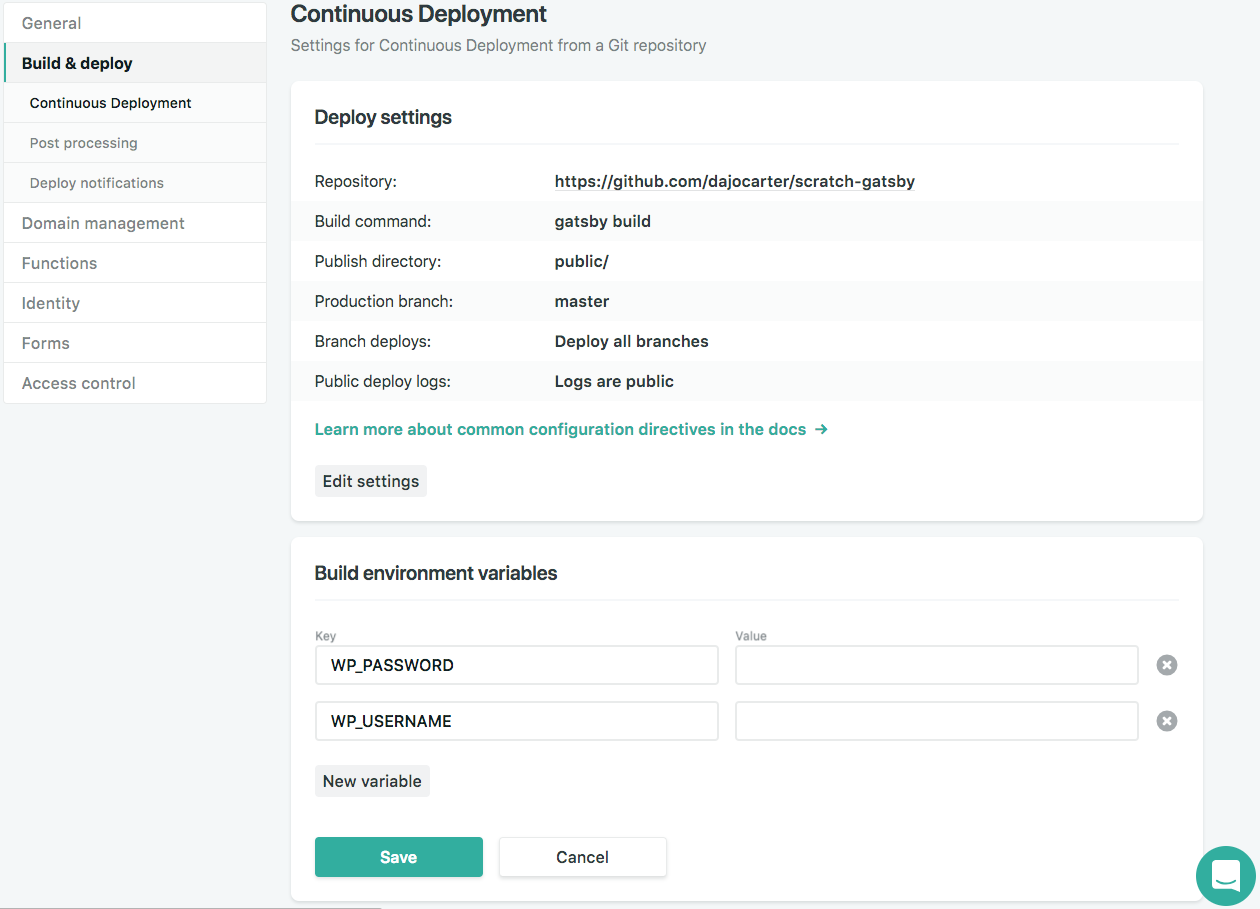WordPress Authentication with Gatsby
Posted on
Setting up authentication with Gatsby allows you to pull data from protected routes like WordPress settings and information about your user profile. For example, here's the new information I get with authentication set up.

To get started, you'll need to install the Basic Auth plugin in your WordPress installation. Then you'll need to inform your gatsby-source-wordpress plugin of your WordPress username and password.
Open your gatsby-config.js file and locate the portion for configuring gatsby-source-wordpress and add the following:
{
"resolve": "gatsby-source-wordpress",
"options": {
"baseUrl": "yourdomain.com",
"protocol": "https",
"hostingWPCOM": false,
"useACF": true,
"verboseOutput": true,
"auth": {
"htaccess_user": "yourWPusername",
"htaccess_pass": "yourWPpassword",
"htaccess_sendImmediately": false
}
}
}Fire up gatsby-develop and you'll be able to see the protected data now in GraphiQL.
Taking it further
Your WordPress username and password is something you probably don't want to expose to the world. To get around this, you can use environment variables.
In order for Gatsby to read enviroment variables in gatsby-config.js, you'll have to install the NPM package dotenv using either npm install dontenv or yarn add dotenv. Once installed, at the top of your gatsby-config.js file, add the following:
require('dotenv').config({
path: `.env.${process.env.NODE_ENV}`,
})Now you're ready to create a .env.development file in the root of your Gatsby project (same level as gatsby-config.js). Don't forget to add it to your .gitignore! Once you've created that file, add your WordPress login information:
WP_USERNAME=yourWPusername
WP_PASSWORD=yourWPpasswordFinally, open your gatsby-config.js file and locate the portion for configuring gatsby-source-wordpress and replace your username and password with the following:
auth: {
htaccess_user: process.env.WP_USERNAME,
htaccess_pass: process.env.WP_PASSWORD
}Once again, fire up gatsby develop to make sure it works.
This setup, however, only works in development so far. If you decide to deploy this, your production build won't have access to your environment variables since they're not being tracked. I use Netlify to deploy my Gatsby sites, so other deployment setups will be different, but it's incredibly easy to do with Netlify (like usual with them). You just need to go to the deploy settings for your site and add Build environment variables. Check out the screenshot below if you're lost.
